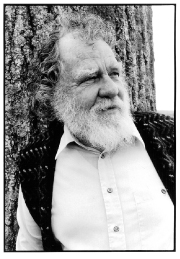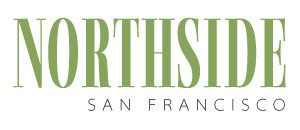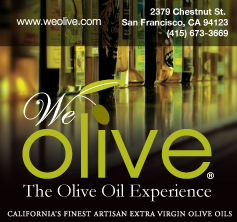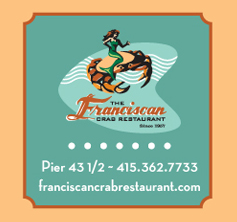Spun out of that vortex which is Wichita, Charley Plymell reached San Francisco on that road that ran through the astonished heart of America, riding his chopper (at least in my Midnight Cowboy movie of him) … His vision of the apocalypse rose of America … Gough Street blues … Kansas madman’s dream … Neal Cassady down, Kerouac down, all down the great American drain – and the vision goes on.
– Lawrence Ferlinghetti
from the introduction to
Neon Poems, by Charles Plymell
Plymell has as much to say about death as Hemingway did and a lot more to say about it in terms of the present generation stillborn into a world that can offer nothing.
– William S. Burroughs
from the introduction to
The Last of the Moccasins, by Charles Plymell

photo: Gerard Malanga
After a 15-year absence, poet, publisher and artist Charles Plymell returns to San Francisco to read his poetry in the town he once called home. We spoke to Plymell about his experiences in San Francisco, past, present and future.
When did you last visit San Francisco?
The last time I visited was in 1996 with Ralph Ackerman. In 1962–63, at his Mission Street studio, I printed underground avant garde publications, Now and The Last Times, to which Ginsberg, Ferlinghetti, McClure, and Whalen contributed as well as Bukowski, Dean Stockwell, Wallace Berman, Bobby Driscoll, George Herms, and others.
I also made a couple of eight-millimeter movies that was all the rage in 1962–63 and remember giving Robert Frank a ride on my motorcycle to San Francisco premiers like 8½ and Flaming Creatures. Things seemed to converge rather quickly in tune with the mind-altering drugs and the release of Naked Lunch.
So in 1996, S. Clay Wilson lettered “Charley is back” on an ad space near his flat. Ackerman had sponsored my poetry reading during which some old friends reunited. Glenn Todd attended, the last man standing at Gough Street after Neal Cassady; Allen Ginsberg and I moved on following the Kennedy assassination. Don Donahue, who started underground comics with me printing the first Zap Comix, was there. S. Clay Wilson was there and continued a Wilson trip as heavy as LSD, avant-garde movies, and underground comics, combined with more agony and ecstasy than could, unfortunately, be recounted here. Al Cohen from The Oracle attended while Goblin [Magazine] conducted a noted interview.
You mentioned that San Francisco was just one stop on that trip.
On the way back, the train stopped at Lawrence, Kan., and we visited Allen Ginsberg and William Burroughs. It was the last time Allen and Bill would see each other, and I recount the dinner in my book Some Mother’s Sons. I plan to read excerpts on May 22.
Can you give us some background about the beginnings of your writing career?
I had dropped out after my freshman year of high school. After roaming in the West, I went to a university for a few years – not working toward a degree, but mainly to keep out of jail. Tuition was nominal and work was plenty. Gas was fifteen cents a gallon in New Mexico, so everything was easy in the fifties. There was still a future that even fools could hold.
Like many, I gravitated toward the English Department and began writing poetry and printing little magazines during my night-shift printing job. I was influenced by Bob Branaman and Allen Russo, who moved to San Francisco in the early sixties. I joined them there and met the Beat Generation principles when Allen Ginsberg and Neal Cassady moved into my flat in San Francisco.
Prior to that, I had visited Kenneth Rexroth and had a collage exhibit at the Batman Gallery. I experimented with all the legal hallucinogens, and with Brautigan, watched the hippies emerge. He became one and wrote a famous novel for them, and I got a job on the docks.
I was linked to labels, but tried to avoid them. My main influences in life had been rounders when I traveled the western states with my sister, who worked for madams, and I worked various jobs while grooving with jazz hipsters of the fifties from Kansas City to Lost Angeles. Route 66 was my commute, and I read Loren Eiseley, who grew up on the plains as I did, and I read the hip poets, Patchen and Cummings, and the surrealist, Hart Crane from Ohio, but bennies, boo and bebop, were my style.
Tell me more about the poetry you’re selecting for the Readers Cafe and Bookstore.
I’ll be reading the title poem from Apocalypse Rose; Allen Ginsberg wrote the introduction to that volume. I’ll read a bit from The Last of the Moccasins, first published by City Lights. Also, I’ll be reading from Neon Poems and from my new publication through Ecstatic Peace, Eat Not Thy Mind.
Charles Plymell Poetry Reading: Readers Cafe & Bookstore, Fort Mason Center, Building C, Room 165; May 22, 1 p.m.; (415) 771-1076, www.readerscafe.org
Sharon Anderson is an artist and writer in southern California. She can be reached at www.mindtheimage.com.








